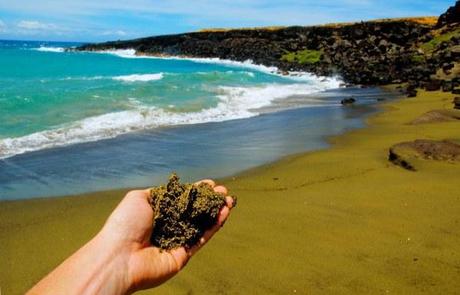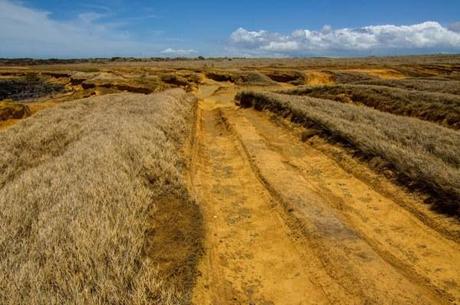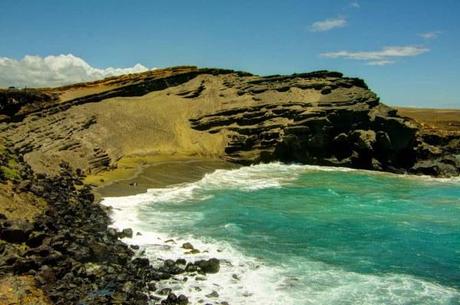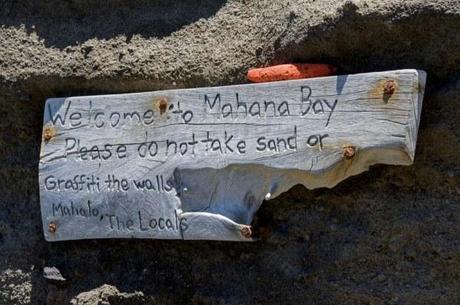
It is a long, hot, dusty walk. But considering that it leads to one of only four green sand beaches in the entire world, it’s tough to complain.
The others, we’re told, are Talofofo Beach in Guam, Cormorant in the Galapagos Islands, and Hornindalsvatnet in Norway. Now that we know of them, they’re definitely on our “to-do” list. But having just visited Papakolea Beach on the southern shore of Hawaii’s Big Island, we’re happy to report we’ve now visited twenty-five percent of the globe’s green sand beaches.
To be fair, you don’t have to walk there like we did. Industrious locals offer to drive you, for a fee of course. Or you can try driving yourself, but the deeply rutted road is really only traversable by a high-clearance four-wheel-drive vehicle. Our budget rental car wasn’t nearly up to the task. Besides, after the roughly two-hour drive from most hotels in either Kona or Volcano, it’s nice to be out of the car and on foot for a while.

And the five-mile round trip hike is stunning. You can follow Hawaii’s beautiful coastline the entire way or short-cut a bit over windswept pastures. Either way, the sight and sound of the ocean is never far away.
Eventually you reach the remains of a volcanic caldera. The sea has washed away one entire side, leaving a semi-circular cliff inlet with our green sand beach at the bottom.

The strangely colored sand is really olivine crystal eroded from the volcanic rock inside the crater. When in gem form the crystal is a bright green, while the Papakolea beach sand is more olive. We assume that is because the olivine here is mixed with other types of sand, most notably Hawaii’s ever-present black sand. We’ve noticed before that not all black sand beaches are equally black. We’re curious to see how other green sand beaches stack up with this one in terms of their “greenness.”

Once exposed to the elements, olivine weathers quickly, making an accumulation sizable enough to color an entire beach exceedingly rare. For that reason, visitors are asked to leave the sand where they find it. There’s a limited quantity of the stuff and a limited number of such places anywhere in the world.
18.967039 -155.659857
